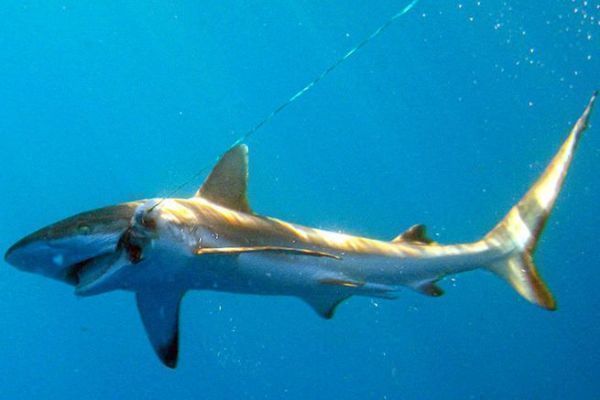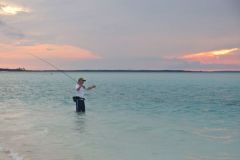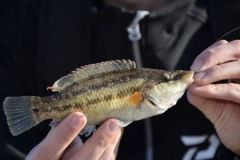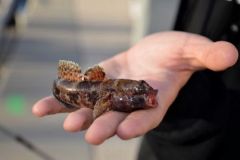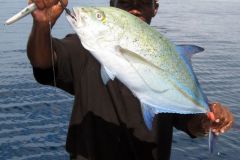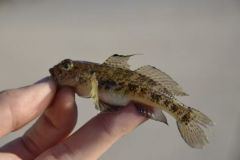Scientific name
Carcharhinus melanopterus (Quoy and Gaymard, 1824)
Morphology
The blacktip shark has a massive, streamlined body typical of sharks. Its head bears small black eyes. Its upper jaw has 12 rows of vertical triangular teeth with grooves on each side. Its lower jaw contains 11 teeth on each side, similar to those above, but more finely serrated.
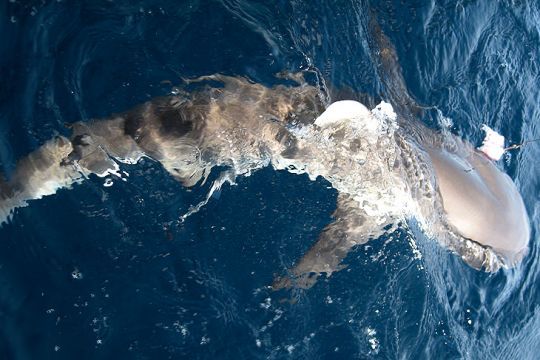
This shark has a fin-like dorsal fin with a black tip. In fact, all its fins are tinted black at the tip, the distinctive feature of this blacktip shark. Its back is gray, as are its flanks, with a clear white stripe down the middle. The blacktip shark's belly is clear.
Fishing spots
This shark can be found throughout the Indian Ocean, from South Africa to the Red Sea, and all the way to the Pacific Ocean, where it occupies a central position in warm waters from northern Australia to southern Japan. It enters the eastern Mediterranean via the Suez Canal. It likes to live close to coral reefs. It is very loyal to its habitats, and can stay for several years in the same 500 x 500 m area. It hunts only 5 to 10% of this perimeter, always in the same places.
It makes useful trips at night just to hunt. It moves more during the day, leaving the reefs and skirting the sandy edges. In fact, it can be observed stealthily on the surface near the shore, especially in the case of smaller individuals. It lives in little water, often close to the surface. It sometimes lives there in association with other fish such as jacks.
Blacktip shark fishing techniques
Blacktip sharks feed on fish (mullet, grouper, trevally, wrasse, surgeonfish, etc.). They sometimes hunt in groups, coordinating their actions to surround their prey. These sharks also feed on cephalopods: squid, cuttlefish and octopus.
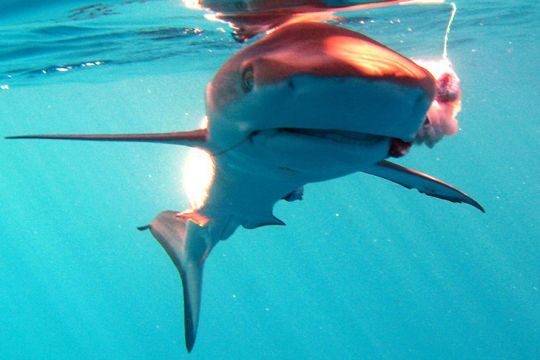
They are usually caught without searching for them on baited lines, generally when longlining for oily fish. For their specific search, the steel cable tip on the leader prevents unwanted breakage. It's also possible to hit them with surface lures, the best kind of fishing.
Reproduction
This blacktip shark breeds offshore in January and February in Australia, and from November to March in French Polynesia. Females sometimes give birth every other year. In the Indian Ocean, two breeding cycles have been observed each year, in June-July and December-January. Ovulated eggs measure 3.9 by 2.6 cm. Birth takes place in very little water on the reefs. Newborns measure 33 to 50 cm.
Size and weight
- Legal minimum catch size: none
- Size at sexual maturity: 0.95 to 1.10 m
- Average height: 0.90 to 1.20 m
- Maximum size/weight: 1.80 m âeuros 14 kg
- World record: 13.55 kg âeuros 1.01 m (Saint-Brandon, Ãle-Maurice, 22/10/1995)
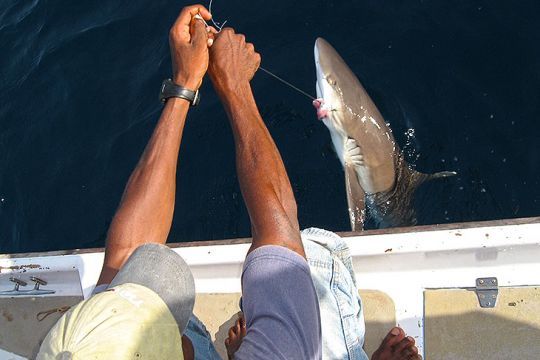
Good to know
The blacktip shark is one of the 3 most common sharks in the Indo-Pacific. It lives alone or in small groups. It is a formidable hunter at night and in low light, thanks to its very precise night vision. It never sleeps; its brain is divided into two parts, one sleeping for 15 minutes while the other is awake, all alternating.
